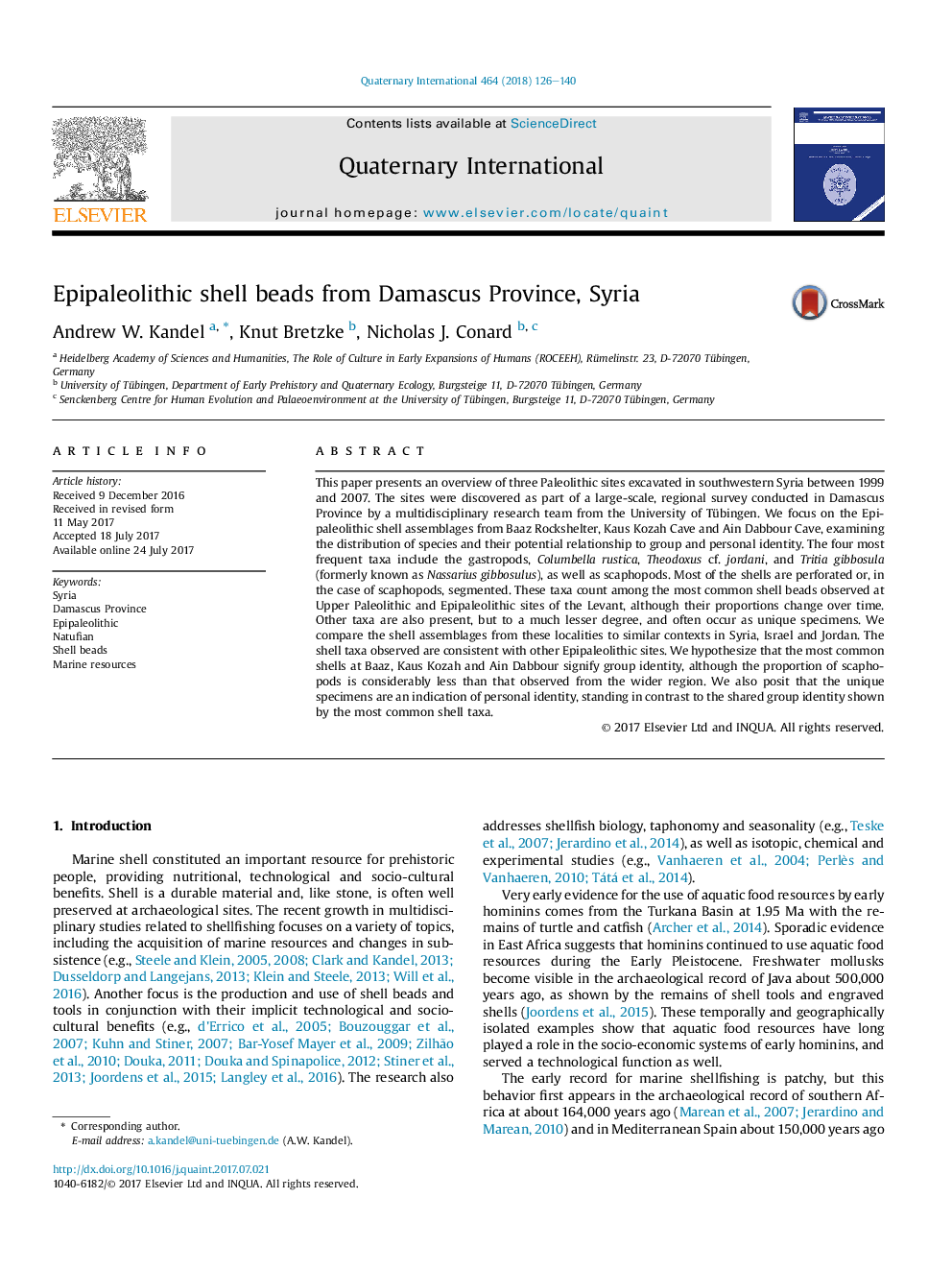| کد مقاله | کد نشریه | سال انتشار | مقاله انگلیسی | نسخه تمام متن |
|---|---|---|---|---|
| 7450933 | 1484058 | 2018 | 15 صفحه PDF | دانلود رایگان |
عنوان انگلیسی مقاله ISI
Epipaleolithic shell beads from Damascus Province, Syria
ترجمه فارسی عنوان
دانه های پوسته ی اپیبالولیت از استان دمشق، سوریه
دانلود مقاله + سفارش ترجمه
دانلود مقاله ISI انگلیسی
رایگان برای ایرانیان
کلمات کلیدی
موضوعات مرتبط
مهندسی و علوم پایه
علوم زمین و سیارات
زمین شناسی
چکیده انگلیسی
This paper presents an overview of three Paleolithic sites excavated in southwestern Syria between 1999 and 2007. The sites were discovered as part of a large-scale, regional survey conducted in Damascus Province by a multidisciplinary research team from the University of Tübingen. We focus on the Epipaleolithic shell assemblages from Baaz Rockshelter, Kaus Kozah Cave and Ain Dabbour Cave, examining the distribution of species and their potential relationship to group and personal identity. The four most frequent taxa include the gastropods, Columbella rustica, Theodoxus cf. jordani, and Tritia gibbosula (formerly known as Nassarius gibbosulus), as well as scaphopods. Most of the shells are perforated or, in the case of scaphopods, segmented. These taxa count among the most common shell beads observed at Upper Paleolithic and Epipaleolithic sites of the Levant, although their proportions change over time. Other taxa are also present, but to a much lesser degree, and often occur as unique specimens. We compare the shell assemblages from these localities to similar contexts in Syria, Israel and Jordan. The shell taxa observed are consistent with other Epipaleolithic sites. We hypothesize that the most common shells at Baaz, Kaus Kozah and Ain Dabbour signify group identity, although the proportion of scaphopods is considerably less than that observed from the wider region. We also posit that the unique specimens are an indication of personal identity, standing in contrast to the shared group identity shown by the most common shell taxa.
ناشر
Database: Elsevier - ScienceDirect (ساینس دایرکت)
Journal: Quaternary International - Volume 464, Part A, 10 January 2018, Pages 126-140
Journal: Quaternary International - Volume 464, Part A, 10 January 2018, Pages 126-140
نویسندگان
Andrew W. Kandel, Knut Bretzke, Nicholas J. Conard,
